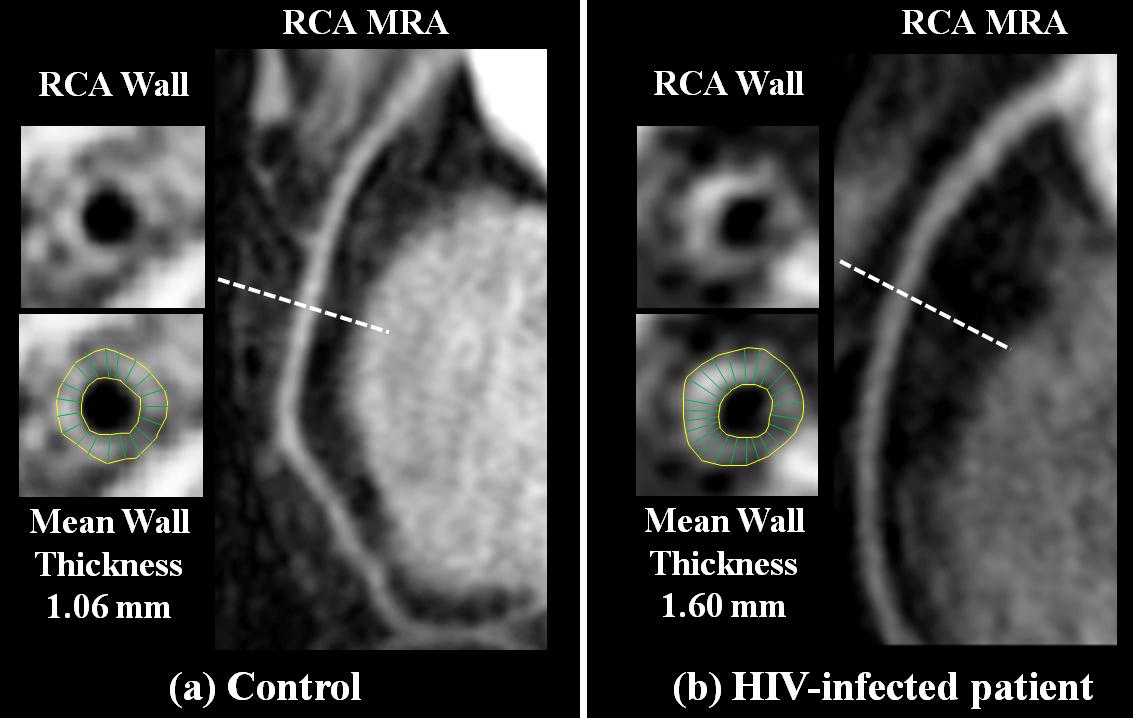Non-invasive imaging shows earlier sign of cardiovascular disease in vessels of HIV patients
Smoking, fat levels in blood, and long-term use of HIV meds suggested as early risk factors
A team of researchers at the NIH Clinical Center found that the coronary (heart) vessel walls in a group of 35 HIV-positive young adults were, on average, thicker than in a group of 11 young adults without the virus. They also found that duration of HIV therapy, smoking cigarettes, and high fat levels in the blood were each linked to thicker vessels in the first group. The researchers used an advanced, non-invasive imaging technique called time-resolved phase-sensitive dual inversion-recovery black-blood vessel wall MRI (TRAPD) to view the vessels.
This study is the first to show greater wall thickness—a sign of cardiovascular disease—in the coronary vessels of young adults who contracted HIV at an early age. People with long-term HIV infection are at risk for developing cardiovascular disease earlier in life. Though further research is needed to determine cause and effect, the findings may have implications for treatment and prevention of cardiovascular disease in young adults with long-term HIV infection. Depending on the outcome of future research, non-invasive coronary vessel wall imaging by MRI may become a relatively simple tool for assessing blood vessel health in people with HIV and other at-risk populations.
The investigators will next use coronary vessel imaging to evaluate potential treatments to improve cardiovascular disease risk in people with long-term HIV infection in two studies at the NIH Clinical Center. To learn more, visit here and here.
The research was supported by the National Institute of Diabetes and Digestive and Kidney Diseases, the National Institute of Allergy and Infectious Diseases, and the National Institute of Biomedical Imaging and Bioengineering, all part of the NIH.
The results published in Clinical Infectious Diseases on August 25, 2014.


